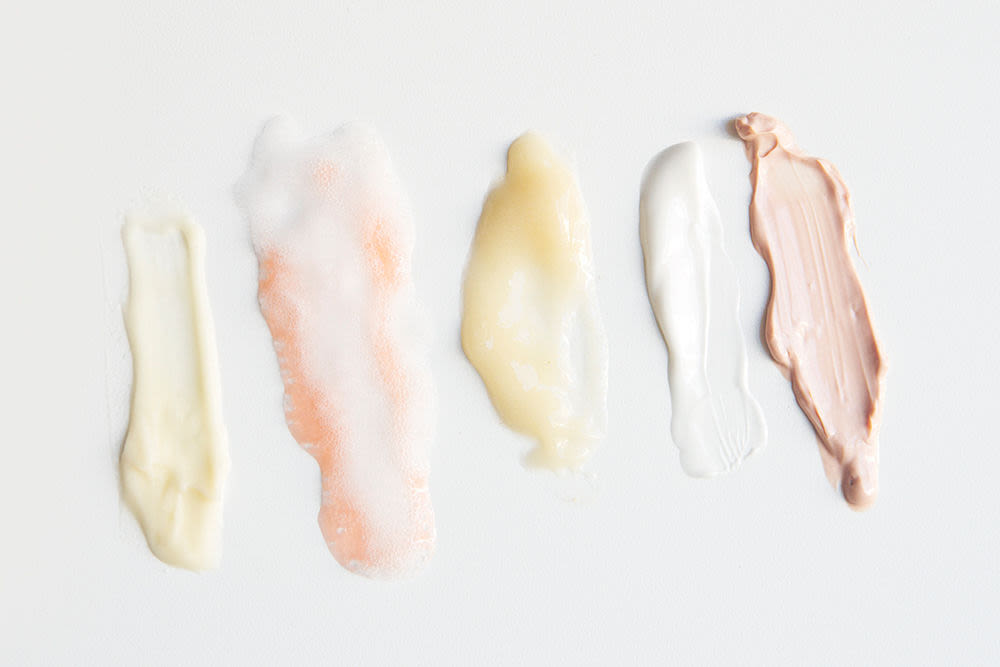Since pretty much every movie coming out is a superhero comic book blockbuster, it seems like a skincare hero flick can’t be far off. Imagine: An unassuming serum user accidentally develops a facial mutation that gives that person the ability to disappear at will after using too many products. Sounds cool! But maybe a bit of a stretch. Layering products won't give you supernatural abilities (unless you call glowy skin super!) but there is reason to proceed with caution. Some products are better kept separate, unless you're actively looking for irritation and possible breakouts. Skincare isn’t one-size-fits all, though. Even expert opinions vary. So we’ve enlisted the help of two: Dr. Debra Jaliman, board-certified dermatologist and assistant professor of Dermatology at the Icahn School of Medicine at Mount Sinai, and Dr. David Lortscher, another board-certified dermatologist who’s also the CEO and founder of Curology. Read this, memorize it, and be safe out there.
Retinol
Treat retinol like that girl in your history class who always sat in the front: she’s hard-working and consistent but can also be a little bit much. Retinol isn’t exactly the same as exfoliating, but it does encourages cell turnover, which means it's still a peeling agent. Mixing retinol with other exfoliants can cause extra dryness and damage the skin’s protective barrier. More is not always more! Acids + Retinol: no.
Instead, try protecting with a layer of SPF. This is helpful because even on days you don’t use the retinol, your skin is still extra sensitive to light. “Retin-A helps replace older skin with fresh, new skin, which is more prone to sunburn,” says Dr. Jaliman.
AHAs/BHAs
Glycolic, lactic, and salicylic acids, for example. As mentioned above, retinol can be too much when paired with acids, but be wary of layering them with vitamin C, too. (AKA L-ascorbic acid.) An acid is still an acid, even when it gets a glow-y makeover and rebrands itself as a vitamin. Try using your vitamin C once every couple weeks in lieu of your acid to help with skintone and hyperpigmentation.
When you are chemically exfoliating, make sure to increase your skin’s overall hydration. Add in a mild serum, like a hyaluronic acid or aloe, to replenish after you peel.
Benzoyl Peroxide
Benzoyl Peroxide works by killing the bacteria that causes acne, making it an ideal spot-treatment for whiteheads. But if the word ‘peroxide’ brings back memories of teenage attempts at sun-kissed highlights, that’s because benzoyl peroxide has its own potent oxidizing effects. (Check that word origin.) Good for acne, bad for other products: “Benzoyl peroxide oxidizes Retin-A, and can be irritating to the skin if applied together,” says Dr. Jaliman. Plus, as Dr. Lortscher warns, “Topical dapsone [AKA Aczone], when layered with benzoyl peroxide, will turn skin a temporary yellow-orange color, so it’s best to avoid.” Because BP is antibacterial, it actually does play nicely with other acne-fighting ingredients, such as your AHAs and BHAs. Retinol, other antibacterials: no. Effaclar Duo: yes!
Vitamin C
If you’re already using a vitamin C in serum form, it’s important to make sure your cleanser isn’t sabotaging the serum’s attempts to give you glow. Residue left over by cleansing oils creates a barrier preventing water-soluble vitamin C from penetrating the skin. So make sure to really wipe your face off. If you use an alkaline bar soap to cleanse, it may be a good idea to wait a couple minutes before applying your serum. But as Dr. Lortscher says, “Don't overthink the pH thing too much. Waiting 20 to 30 minutes between applications may be an excessive precaution.” To be safe, wait like five.
To maximize your glow, swap vitamin C in for one of your other “active” products (like an acid) once in a while, instead of layering them both. For enhanced effectiveness, try using vitamin E and ferulic acid, both of which enhance the effects of other vitamins when used together.
SPF
Turns out, SPF doesn’t work like math, Dr. Lortscher clarifies: "adding your SPF 30 to your SPF 15 doesn’t get you to SPF 45." Don’t try to be clever and mix it with foundation or moisturizer either, as both tactics can mess with the protection factor and leave you exposed. Sunscreen should be applied as your last skincare step and go on as one even layer.
What you can do is make moves towards adding an antioxidant serum under your sun protection. “Layering an antioxidant serum—like vitamin C—and other skin treatments under your sunscreen allows the direct benefits of these ingredients to soak into your skin,” says Dr. Lortscher. Research shows that vitamins C and E can have a positive effect towards correcting photodamage when combined with sunscreen. Just another reason to leave you with this friendly reminder: Never leave the house without sun protection.
Speaking of SPF...Read here for everything you might want to know about sun protection.

